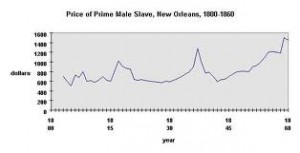In America today, men and woman can’t fathom the fact that only 250 years ago slavery was active and flourishing. Brought over from Africa, the Dutch and England were the first to develop the slave trading with American colonies. The government and American farmers unaware the profitable outcome, make their investments.

At first about all slaves went to South Africa or the Caribbean islands to start the production of sugar. Once Americans starting realizing the profit that could be made from slave-owning, sure enough they jumped on the bandwagon. Slave investments simply returned high profits. How could anyone look away with an abundance of fresh land ready to be cultivated? Slave labor was more profitable and productive than large farms cultivated by free workers. The plantation was closely similar to a factory and the business of labor was much like an assembly line. Every individual worker was given a set task and was obligatory to perform until the plantation owner says he is finished.

The plantation hands were divided into three classes: First, the best hands, embracing those of good judgment and quick motion; second, those of the weakest and most inefficient class; third, the second class of hoe hands. Thus classified, the first class will run ahead and open a small hole about seven to ten inches apart, into which the second class will drop four to five cotton seeds, and the third class will follow and cover with a rake (Miller and Sexton).
The farmers in the upper south gradually started selling their slaves to southern planters for profits. With profits to be made southerners quickly invested more into their plantation. The government, pleased with national revenue for the time being is supportive of this, demanding of a nice discrimination in the use of labor operations. Towards the beginning of the 1800s the white males in the northern states noticed they were losing job opportunities to underclass slaves. This news was not satisfying which initiated some dispute and caused others to understand why slavery isn’t completely lucrative for the white American workers. Thomas Jefferson, a previous slave owner was a large outspoken abolitionist of the Revolutionary era. Unfortunately slavery wasn’t abolished during his lifetime, but soon after his death.
Most people look the other way when slavery is brought into picture. Typically they think how horrific, unethical owning another human could be. I look at it as how resourceful and economically correct it was at the time. There was no industry in its everyday operation that moved more systematically and precisely than the cotton plantation.
Works Cited:
Miller, Roger, and Robert Sexton. Issues in American Economic History. United States of America: South-Western, 2005. Print.

 Download this page in PDF format
Download this page in PDF format